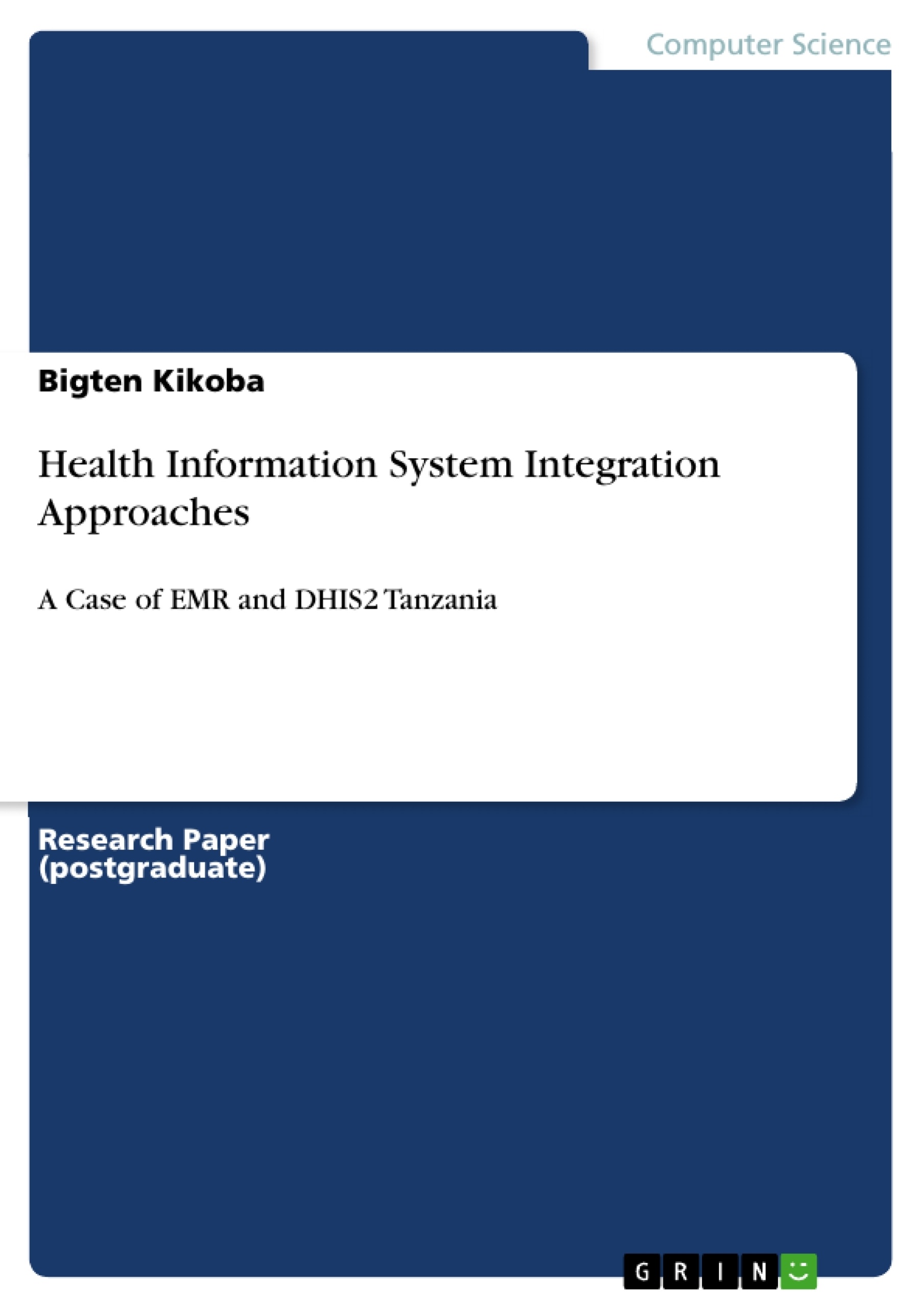Information and Communication Technologies (ICTs) have made significant impact on healthcare industry in the globe. Its adoption and use, has transformed the way healthcare services are delivered and monitored. Influenced by this transformation, MOHCDGE have formulated an eHealth Strategy 2013-2018 to manage these massive shifts from traditional HMIS to electronic means. The strategy highlights the important aspect to consider when automating health facilities. One of the key areas targeted for transformation is the use of ICT to make health facilities more effective and efficient.
However, health information Systems (HIS) in developing countries have been characterized as fragmented, with a number of subsystem operating independently. The fragmentation nature of health systems has been with other factors due existing of multiple initiative to computerize healthcare systems, each initiative serving its own data need goals. Therefore, integration is in essence an initiative to rectify fragmentation. Integration of health care information systems have been ongoing efforts to strengthening quality of care by ensuring proper management of healthcare resources through information-based management system. Due to fragmentation nature of HIS, various efforts have been employed to ensure coherent and standardized HMIS.
With respect to Health Information Systems, integration refers to the act of bringing data and systems together from disparate subsystems to be viewed as one in a certain perspective. As per Park, (2004) integration combine together the data and process of sub-systems into one system, and dealing with aggregation of subsystems cooperating so that the system is able to deliver the overarching functionality and ensure that sub-systems function together as a whole system. In HIS, integration further looking on the processes and routine to capture, process and analyses wide range of data, for both patient and aggregate across different health programs to be used by policy maker and healthcare providers for planning, resource allocation and decision-making purposes. HIS Integration does not only imply computer systems, some integration is paper based reporting system to electronic systems.
This paper reviews some integration approach used in health information systems, drawing literature experiences form developing countries.
Inhaltsverzeichnis (Table of Contents)
- Introduction
- Integration vs Interoperability
- Horizontal, Vertical and Star Integration
- Information Systems Interoperability Methods
- Mapping-Based Interoperability Methods
- Intermediary-Based Interoperability Methods
- Query-oriented Interoperability Methods
- HIS Integration Technologies
- Message-Oriented Integration
- Application-Oriented Integration
- Middleware-Oriented Integration
Zielsetzung und Themenschwerpunkte (Objectives and Key Themes)
This paper aims to review various approaches used in health information systems integration, drawing on literature experiences from developing countries. It examines the complexities of integration versus interoperability and explores the three primary integration approaches: horizontal, vertical, and star integration. The paper further delves into different methods for achieving information system interoperability, including mapping, intermediary, and query-oriented methods. Finally, it examines key HIS integration technologies such as message-oriented, application-oriented, and middleware-oriented integration.
- Health Information Systems Integration
- Integration vs. Interoperability
- Horizontal, Vertical, and Star Integration Approaches
- Information Systems Interoperability Methods
- HIS Integration Technologies
Zusammenfassung der Kapitel (Chapter Summaries)
The introduction highlights the significant impact of Information and Communication Technologies (ICTs) on the healthcare industry and the adoption of eHealth strategies in developing countries. It emphasizes the need for integration to address the fragmented nature of health information systems (HIS) and the importance of HIS integration for enhancing the quality of care and managing healthcare resources effectively. The paper then delves into the concepts of integration and interoperability, explaining their distinctions and offering examples to illustrate their differences.
The next chapter explores three basic approaches to HIS integration: horizontal, vertical, and star integration. It provides detailed descriptions of each approach, including their aims and typical examples in health systems. This chapter also explains the chosen approach for this study, which focuses on vertical integration, highlighting its relevance to the study's objective of examining the aggregation of data from facility-level electronic medical records to the national DHIS2 system.
Following the discussion of integration approaches, the paper focuses on information systems interoperability methods. It outlines three main methods: mapping-based, intermediary-based, and query-oriented interoperability. Each method is explained in detail, highlighting its advantages and drawbacks. The chapter also includes examples of how these methods are applied in the healthcare domain.
Finally, the paper examines specific HIS integration technologies. It describes four main approaches: message-oriented integration, application-oriented integration, middleware-oriented integration, and coordinated-oriented integration. Each approach is explained in detail, emphasizing its key features, benefits, and challenges. The chapter concludes by providing real-world examples of these integration technologies in action.
Schlüsselwörter (Keywords)
This paper focuses on key concepts like health information systems integration, interoperability, horizontal integration, vertical integration, star integration, mapping-based interoperability, intermediary-based interoperability, query-oriented interoperability, message-oriented integration, application-oriented integration, and middleware-oriented integration. These terms highlight the crucial aspects of HIS integration in developing countries, emphasizing the challenges and opportunities associated with achieving effective and efficient healthcare information management.
- Arbeit zitieren
- Bigten Kikoba (Autor:in), 2018, Health Information System Integration Approaches, München, GRIN Verlag, https://www.grin.com/document/437199



